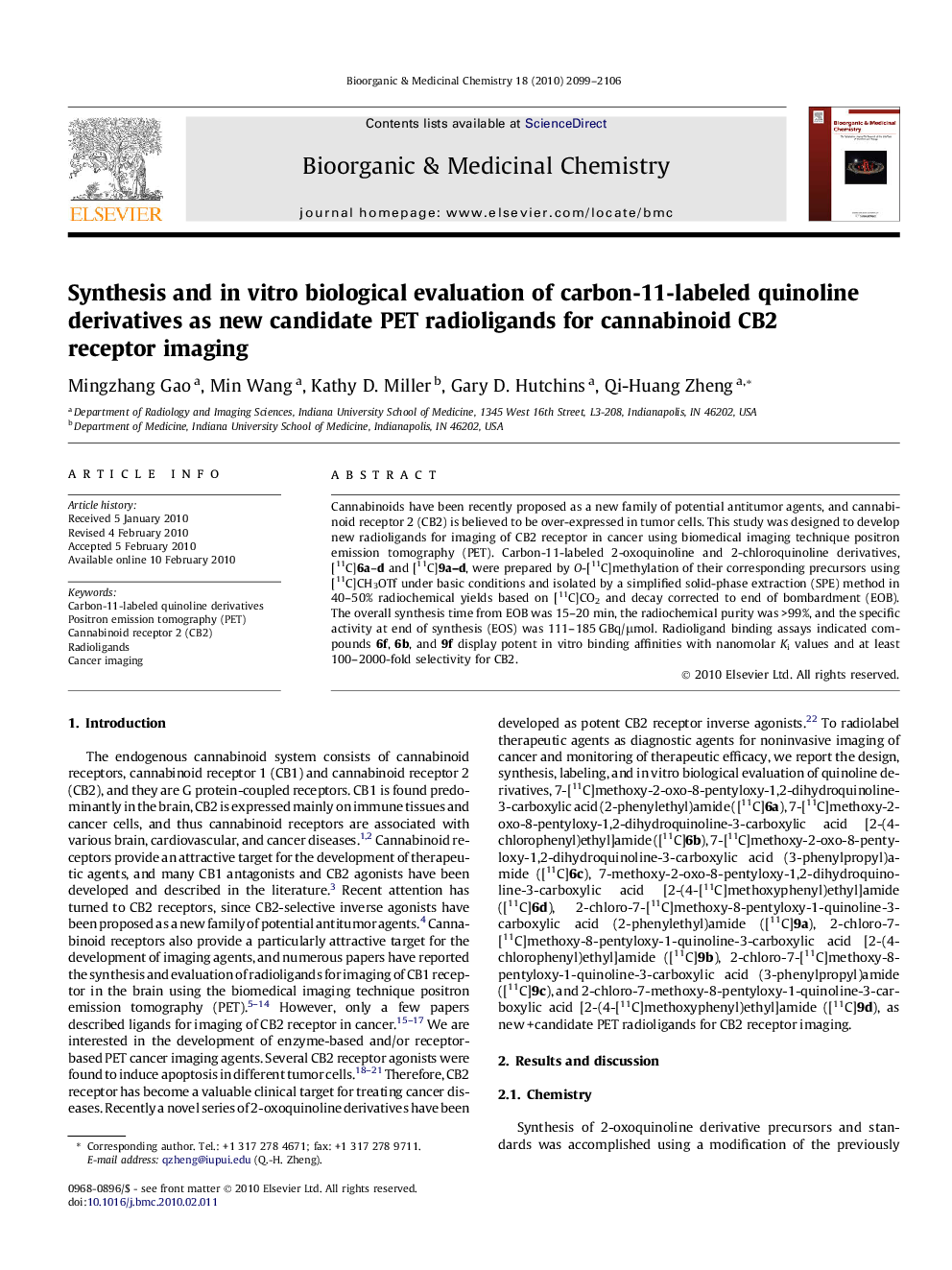| کد مقاله | کد نشریه | سال انتشار | مقاله انگلیسی | نسخه تمام متن |
|---|---|---|---|---|
| 1359446 | 981403 | 2010 | 8 صفحه PDF | دانلود رایگان |

Cannabinoids have been recently proposed as a new family of potential antitumor agents, and cannabinoid receptor 2 (CB2) is believed to be over-expressed in tumor cells. This study was designed to develop new radioligands for imaging of CB2 receptor in cancer using biomedical imaging technique positron emission tomography (PET). Carbon-11-labeled 2-oxoquinoline and 2-chloroquinoline derivatives, [11C]6a–d and [11C]9a–d, were prepared by O-[11C]methylation of their corresponding precursors using [11C]CH3OTf under basic conditions and isolated by a simplified solid-phase extraction (SPE) method in 40–50% radiochemical yields based on [11C]CO2 and decay corrected to end of bombardment (EOB). The overall synthesis time from EOB was 15–20 min, the radiochemical purity was >99%, and the specific activity at end of synthesis (EOS) was 111–185 GBq/μmol. Radioligand binding assays indicated compounds 6f, 6b, and 9f display potent in vitro binding affinities with nanomolar Ki values and at least 100–2000-fold selectivity for CB2.
This paper reports the synthesis and in vitro biological evaluation of carbon-11-labeled quinoline derivatives as new candidate radioligands for PET imaging of cannabinoid CB2 receptor in cancer.Figure optionsDownload as PowerPoint slide
Journal: Bioorganic & Medicinal Chemistry - Volume 18, Issue 6, 15 March 2010, Pages 2099–2106